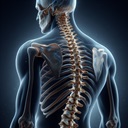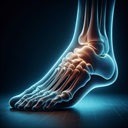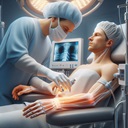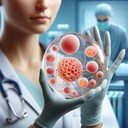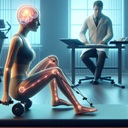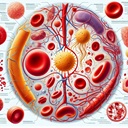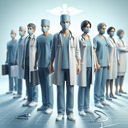Stem cells

About stem cells:
The isolation of cells is done with commercial devices that within the devices own closed system isolates stem cells in the desired number. Stem cells can be isolated from fat tissue through liposuction and isolated in huge numbers (60 -70 million cells).
May also be isolated from bone marrow by puncturing through the skin (percutaneous), without scarring.
These are adult stem cells, autologous (meaning they activate themselves, and are living).
Devices for separating cells are Cytori Celution (cells from fat tissue) and Angel Cytomedix (cells from the bone marrow).
CONDITIONS TREATABLE WITH US
- higher degree of cartilage damage, is preferably up to 2 cm2 with large joints
- osteochondral defects with preservation of cartilage
- osteoarthritis
- damage to ligaments and muscles (up to grade II / III)
- with prolapse or disc damage in the perioperative period
- Under the guidance of the X-ray injections into the vertebrae in osteoporosis, pathological fractures, filling bone cysts, Pseudarthrosis
- augmentation during prosthetic surgery of large joints
- reconstruction of meniscus
OTHER PROCEDURES RELATED TO THE TRANSFER OF STEM CELL ARE
- higher degree of cartilage damage, is preferably up to cm with large joints
- osteochondral defects with preservation of cartilage
- osteoarthritis
- damage to ligaments and muscles (up to grade II / III)
- with prolapse or disc damage in the perioperative period
- Under the guidance of the X-ray injections into the vertebrae in osteoporosis, pathological fractures, filling bone cysts, Pseudarthrosis
- augmentation during prosthetic surgery of large joints
- reconstruction of meniscus
GYNAECOLOGY
- under control placing m stem cells in the ovary, to stimulate the creation of eggs
- flushing the uterus with stem cells to increase the endometrium (because the nesting of the egg cells)
- douching the vagina for women with difficult sexual relations in order to increase humidity
UROLOGY
WHAT ARE STEM CELL LINES AND WHY DO RESEARCHERS WANT TO USE THEM?
The line of a stem cells is a group of cells derived from a single original stem cell and grown in the laboratory. The cells in a line of stem cells continue to grow, but do not differentiate into specialized cells. Ideally, they would not have genetic defects and continue to replicate more stem cells. From the lines of stem cells can be taken groups of cells and frozen to storage or granted to other researchers.
What is stem cell therapy (regenerative medicine) AND HOW DOES IT WORK?
Stem cell therapy, also known as regenerative medicine, as it produces the reparative response of the patient’s cells to, repair dysfunctional and damaged tissue using stem cells or their derivatives. This is the next chapter in the transplantation of organs and cells used in place of donor organs that are numerically limited.
Researchers grow stem cells in the laboratory. These cells are manipulated to specialize into specific types of cells, such as heart muscle cells, blood cells, or nerve cells.
Nakon toga, specijalizovane ćelije mogu biti implantirane u nekoga. Na primer, ukoliko neko ima srčano obolenje, ćelije mogu biti ubrizgane u srčani mišić. Onda zdrave srčane ćelije koje su transplantirane mogu doprineti izlečenju bolesnog srčanog mišića.
Researchers have already shown that your adult bone marrow cells, which are guided to become like heart cells can heal heart tissue in humans, but additional studies are underway.
HAVE STEM CELLS ALREADY BEEN USED IN THE TREATMENT OF DISEASE?
Yes, doctors have already performed a transplant of stem cells, also known as bone marrow transplant. In stem cell transplantation, the stem cells replace cells damaged by chemotherapy, disease, or as a way to improve the immune system to fight against certain types of cancer or blood diseases such as leukemia. These transplants use adult stem cells or umbilical cord blood.Researchers are testing adult stem cells to treat other conditions, including a number of degenerative diseases such as heart failure.
What are the potential problems associated with using embryonic stem cells in humans?
To be useful in humans, researchers must be sure that the stem cells differentiate into the desired specific cell type.
Researchers have found a way in which to direct stem cells to become specific types of cells, such as embryonic stem cells become heart cells. Research in this area is ongoing.
Embryonic stem cells can also irregularly grow or spontaneously specialize in different types of cells. The researchers are studying how to control the growth and differentiation of embryonic stem cells.
Embryonic stem cells can also cause an immune response in which the body attacks the recipient’s stem cells as foreign bodies, or simply fail to function normally, with unknown consequences. Researchers continue to study these possible complications.
At the following link, you can view a presentation on the application of mesenchymal stem cells in orthopedics.


